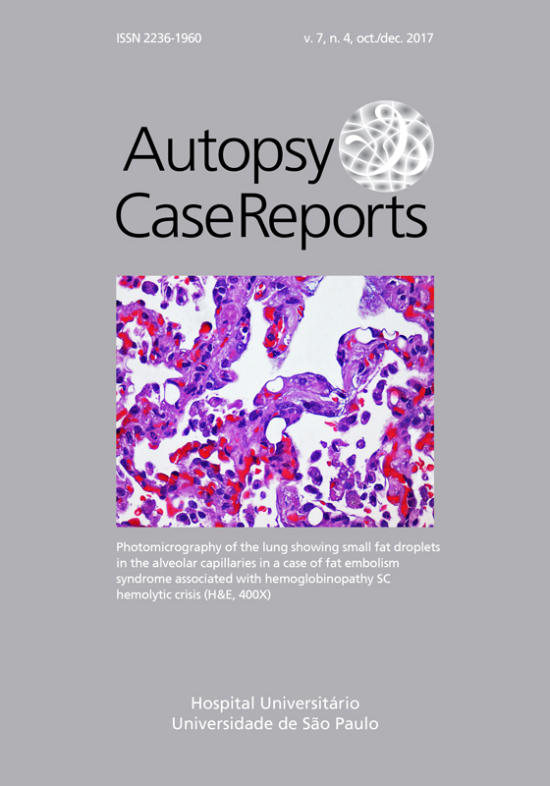Bone marrow necrosis and fat embolism syndrome: a dreadful complication of hemoglobin sickle cell disease
DOI:
https://doi.org/10.4322/acr.2017.043Keywords:
Hemoglobin SC Disease, Bone Marrow, Necrosis, Embolism.Abstract
Sickle cell disease encompasses a wide range of genotypic presentation with particular clinical features. The entity affects millions of people, particularly those whose ancestors came from sub-Saharan Africa and other countries in the Western Hemisphere, Saudi Arabia, and India. Currently, the high frequency of S and C genes reflects natural selection through the protection of heterozygotes against severe malaria, the high frequency of consanguineous marriages, improvement of some public health policies and the nutritional standards in the poorer countries where newborns are now living long enough to present for diagnosis and management. Although there is a high burden of the disease, in many countries, the new-born sickle cell screening test is being performed and is rendering an early diagnosis; however, it is still difficult for sickle cell patients to find proper treatment and adequate follow-up. Moreover, in many countries, patients are neither aware of their diagnosis nor the care they should receive to prevent complications; also, they do not receive adequate genetic counseling. Hemoglobin SC (HbSC) disease is the most frequent double sickle cell heterozygosis found in Brazil. The clinical course tends to be more benign with fewer hospitalizations compared with double homozygotic SS patients. However, HbSC patients may present severe complications with a fatal outcome. We report the case of a 36-year-old man who presented to the emergency care facility with symptoms consistent with the diagnosis of sickling crisis. The outcome was unfavorable and death occurred just hours after admission. The autopsy revealed a generalized vaso-occlusive crisis by sickled red cells, bone marrow necrosis, and fat embolism syndrome.Downloads
Download data is not yet available.
Published
2017-12-12
Issue
Section
Article / Autopsy Case Report
License
Copyright
Authors of articles published by Autopsy and Case Report retain the copyright of their work without restrictions, licensing it under the Creative Commons Attribution License - CC-BY, which allows articles to be re-used and re-distributed without restriction, as long as the original work is correctly cited.
How to Cite
Targueta, E. P., Hirano, A. C. de G., Campos, F. P. F. de, Martines, J. A. dos S., Lovisolo, S. M., & Felipe-Silva, A. (2017). Bone marrow necrosis and fat embolism syndrome: a dreadful complication of hemoglobin sickle cell disease. Autopsy and Case Reports, 7(4), 42-50. https://doi.org/10.4322/acr.2017.043



